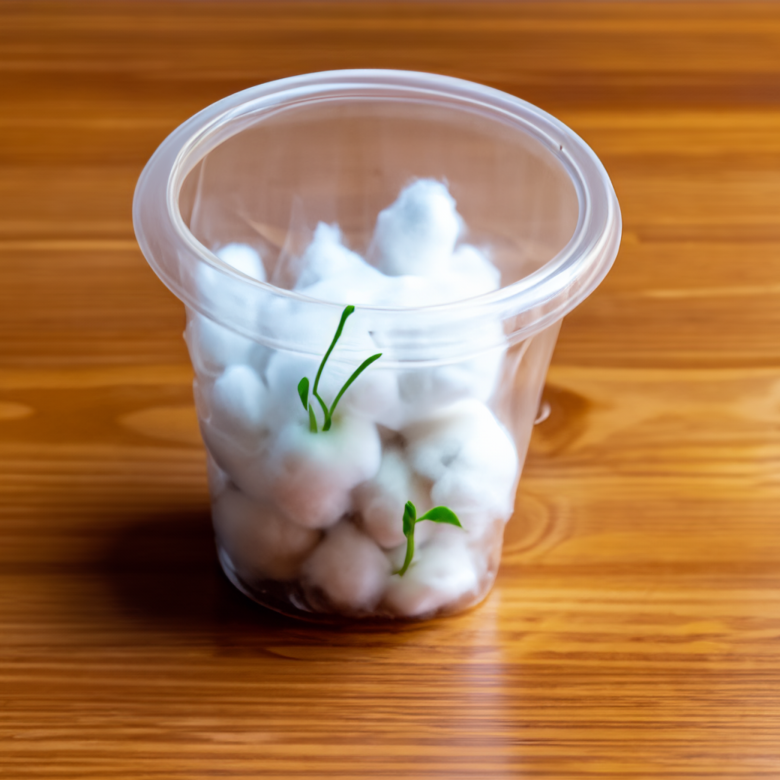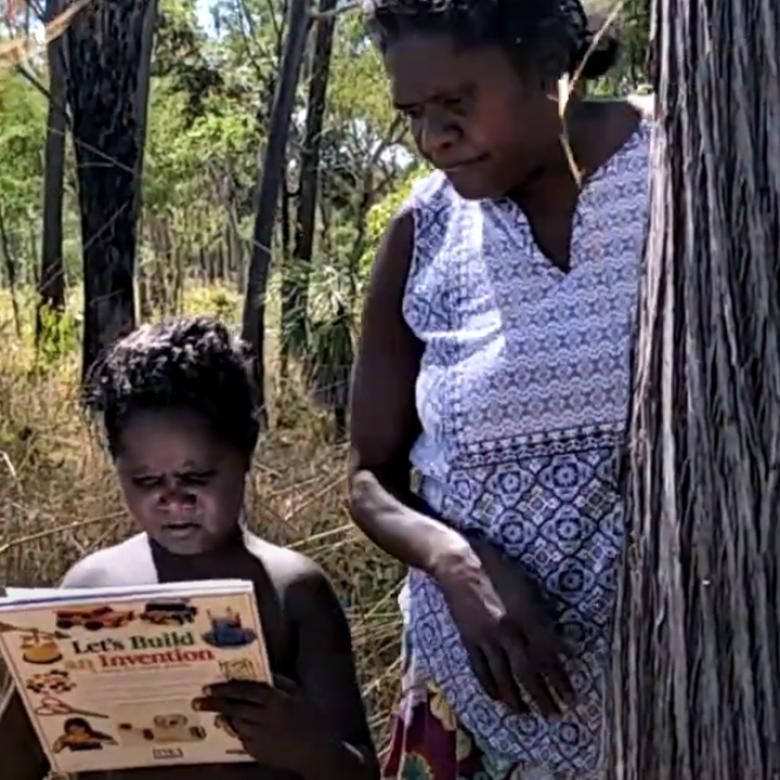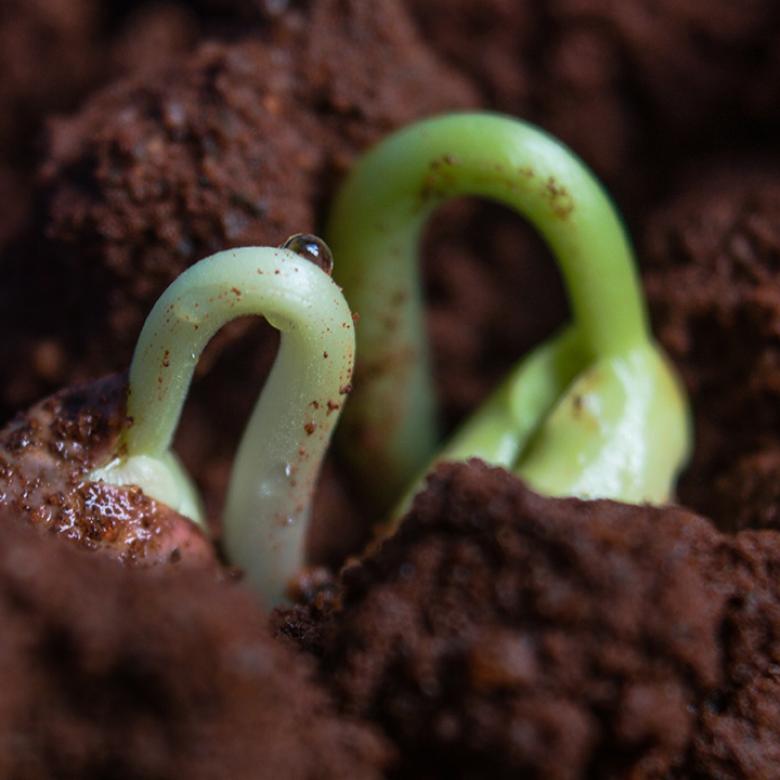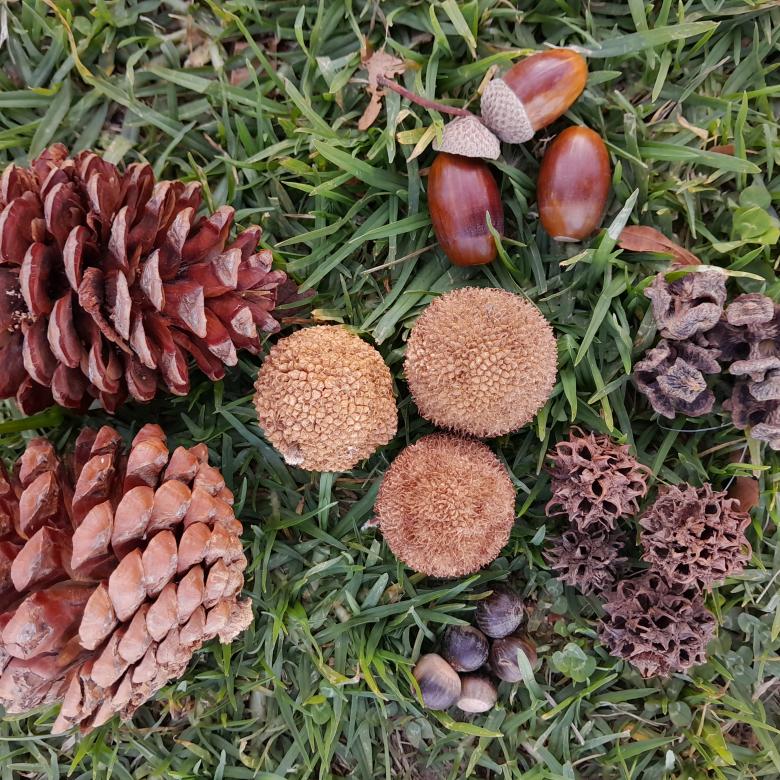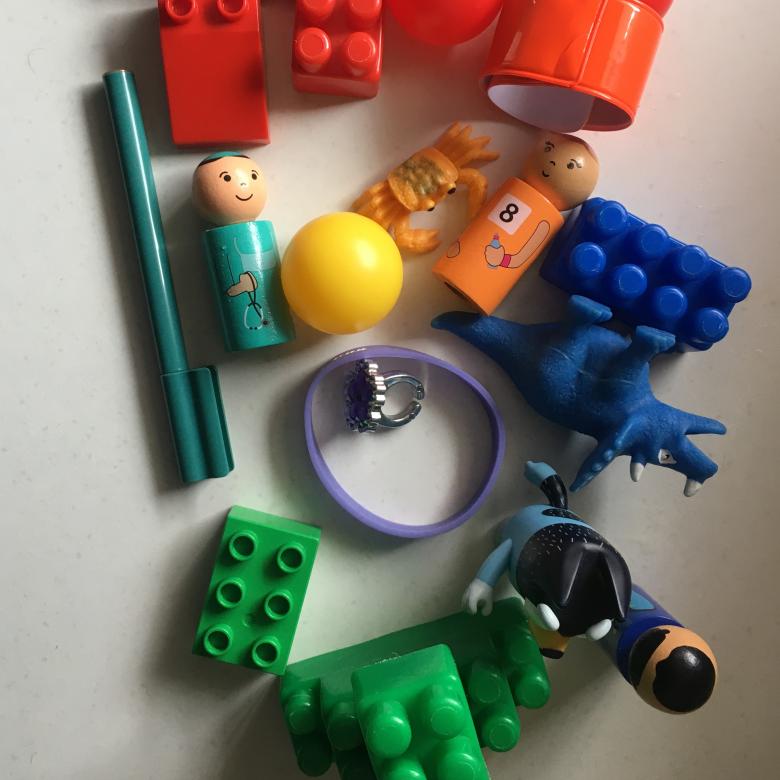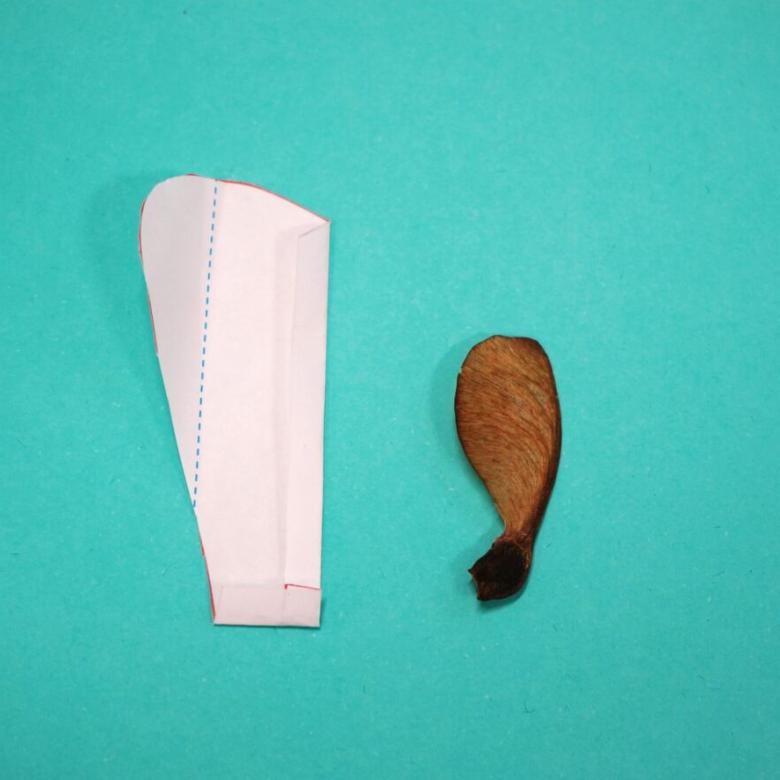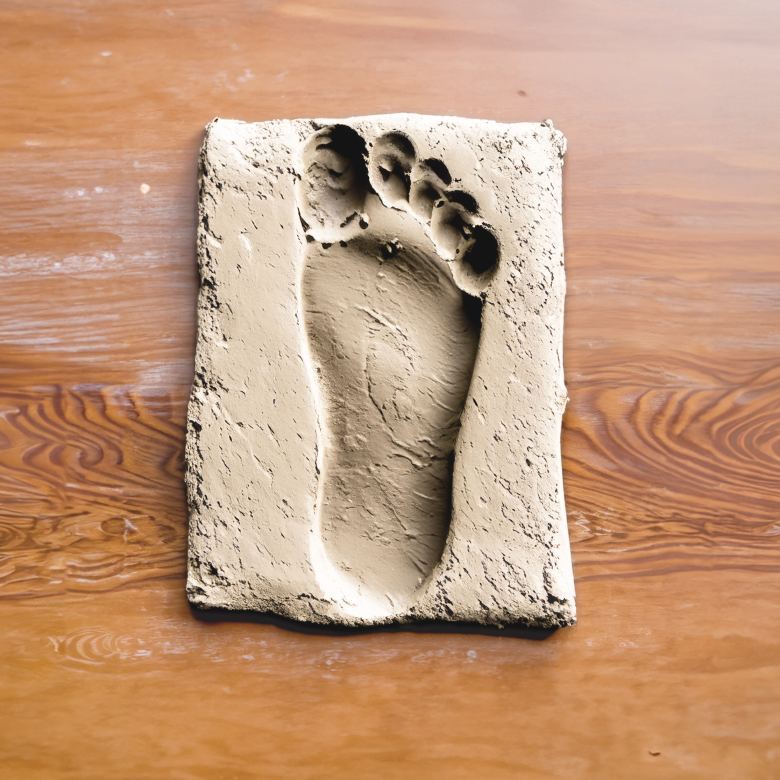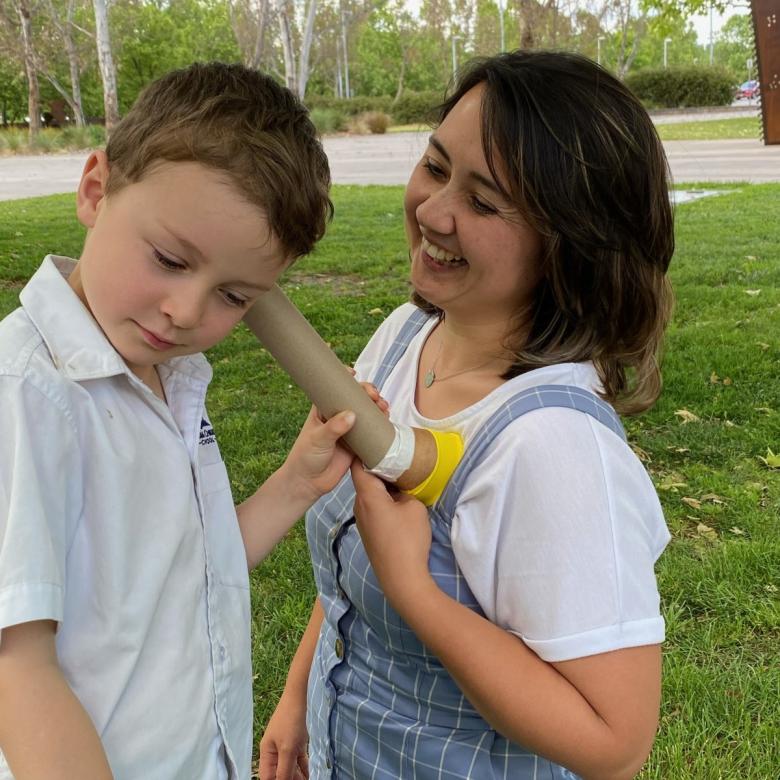You'll need
- 2 clear plastic cups
- Sticky tape
- Cottonwool
- Alfalfa or rocket seeds
- Water
What to do
- Gather your materials on a flat surface.
- Line the bottom of one plastic cup with cottonwool.
- Sprinkle some water over the cottonwool to make it slightly damp.
- Evenly spread 4 or 5 seeds on the top of the damp cottonwool.
- Put the other plastic cup upside down on top of the first one, to create an enclosed container.
- Seal the cups together with sticky tape to make the container airtight so the cottonwool doesn’t dry out. This your mini greenhouse!
- Place the mini greenhouse in a sunny spot.
- Check it every day to see what happens to the seeds.
Questions to ask
Make a few mini greenhouses with slight changes to each and compare what happens to the seeds.
Try using different seeds. Can you recreate the story of Jack and the Beanstalk in your cup?
What happens when you place one in a dark place like a cupboard?
What happens when you add salty water instead of fresh water to the cottonwool?
What happens if you don’t add any water at all?
Try measuring the seedlings with a ruler each day to see which conditions help a plant to grow the best.
What's happening
Another name for a mini greenhouse is terrarium. A terrarium is an indoor enclosure used to grow and observe plants in conditions similar to those in nature. Seeds need the right temperature and amount of water (also written by its chemical formula H2O) and oxygen to sprout. When a seed sprouts, we say it germinates. The seed contains all the energy and food, or nutrients, that the plant needs to germinate. When the seed has used all of its nutrients, the growing plant makes its own nutrients, a type of sugar called glucose (C6H12O6). It does this by using carbon dioxide and water, with the help of energy from sunlight. This process is called photosynthesis.
Photosynthesis is a chemical reaction. It can be shown as an equation:
carbon dioxide + water (with the help of sunlight) → sugar + oxygen
or, using chemical symbols:
6CO2 + 6H2O (+ sunlight) → C6H12O6 + 6O2
(This means ‘6 carbon dioxide molecules plus 6 water molecules turn into 1 glucose molecules and 6 oxygen molecules’.)
Your mini greenhouse is self-watering. The water sprinkled on the cottonwool evaporates when the greenhouse gets warmer. Evaporates means that it turns into water vapour. This water vapour rises, and when it reaches the top of the greenhouse it cools and condenses, which means that it turns back into water. When enough water vapour condenses, a drop forms and trickles down onto the cottonwool. This waters the plant.
When the cups were taped together, air was trapped inside. The trapped air has enough carbon dioxide for the seedlings to live for about 1 month. Once the seedlings run out of carbon dioxide, they must be removed from the greenhouse so they can get more carbon dioxide. You can plant them in a pot of soil in a sunny spot. The plant’s leaves will then collect carbon dioxide from the air and its new roots will collect vitamins, minerals and water from the soil.
Transcription from video:
(Sound of bubbles popping)
David: G’day, I’m David from the Questacon Science Squad, and today I’m going to show you how to make your very own mini greenhouse.
(Camera pans to table)
You need:
- a couple of plastic cups
- some seeds
- some cotton balls
- some water and
- some sticky tape.
Alright, so take one of your cups and grab a few cotton balls out of your bag here and place them in the bottom. That’s plenty.
(David puts some cotton balls into cup).
Next off, grab a few seeds, you don’t want too many, and put them in top of your cotton balls there. Few more. There.
(David sprinkles some seeds on top of the cotton balls).
And a little bit of water. Now this is difficult, you don’t want to use too much and you don’t want to use too little. You want the cotton balls to just be a little bit damp. There we go.
(David pours water into the cup).
If you see water floating around the bottom, it probably means you’ve use too much. That looks just about right./p>
Ok, now, take your second cup and place it on top of your first one, with your seeds and your cotton balls inside it.
(David places second cup on top of first cup).
Grab a nice big bit of sticky tape, and sticky tape it all together.
(David sticky tapes cups together).
There we go. You might need a few different pieces on here. Looks like I’ve done pretty well this time.
(Camera zooms in on David).
Alright, so you’re going to want to leave your little greenhouse in an area that gets a little bit of sun each day and also gets a little bit of shade, it isn’t too hot, it isn’t too cold. You should leave it for about two weeks, checking it daily. And when you come back after about two weeks you might have a few little plants growing inside there.
Now if you want to find out more about greenhouses you can head on down to the Questacon Science Squad website. I’ll see you next time.
Did you know
Earth is like a giant terrarium! Plants grow in the soil (like the cottonwool in the activity) and Earth’s atmosphere keeps water in the environment (like the top cup in the activity). Water cycles through the soil, plants and atmosphere, helping plants to grow.

